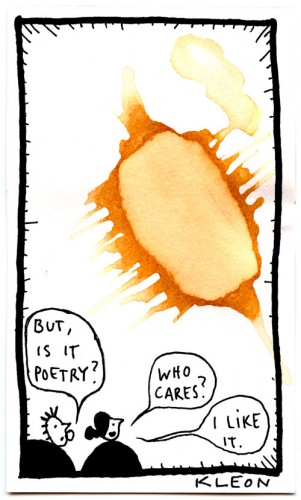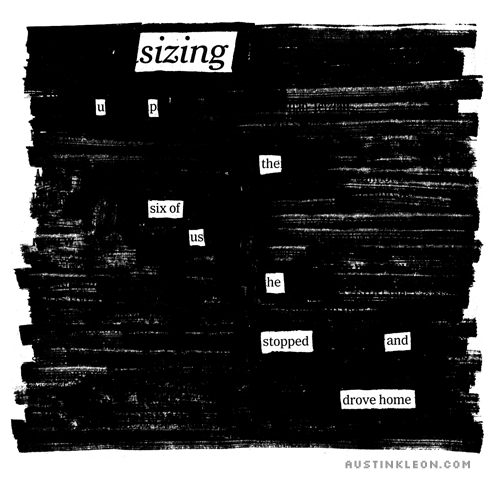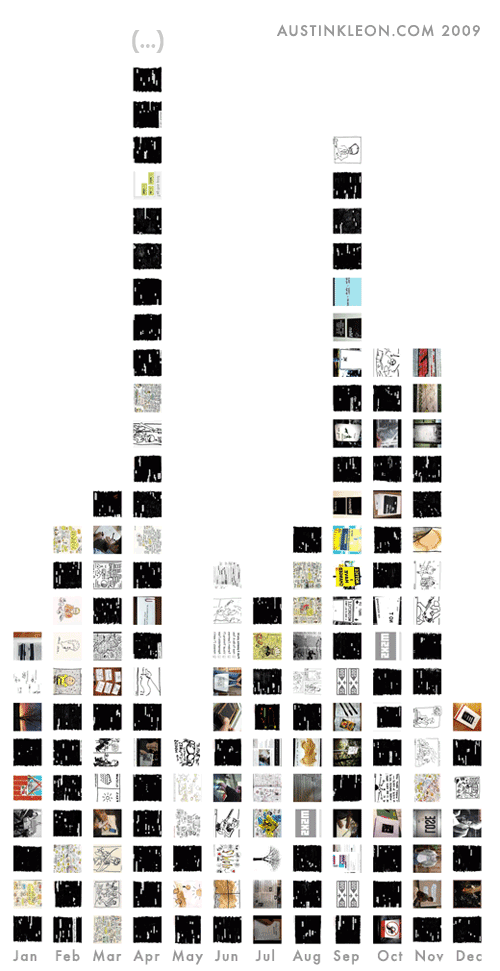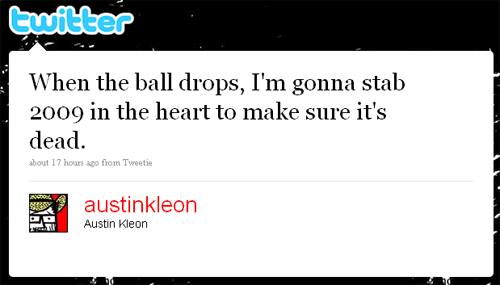IN THE OLDSMOBILE
SIZING UP
2009: THE YEAR IN REVIEW
A few folks seemed to enjoy my Tweet earlier this month:
I have several friends who feel the same way: they’re more than ready for 2010.
For me, the year was colored by a setback at the end of January, when I learned my book release would be pushed back seven months to April 2010. At that point, I’d worked on the book seven months, it was eight months til the original release date of September. Another year and four months seemed like an eternity. In hindsight, it worked out fine: I did a big round of edits to the final manuscript in April, the fall book release schedule was incredibly loaded with heavy-hitters, and now I’m more prepared for the release. But it was tough.
The rest of the year felt like I was stuck in a holding pattern. Where to go next?
Still, there were some highlights.
The best thing I can say about February is that it bought me my first pair of cowboy boots. A perfect ending to the month that I’ve always joked is “a good month to die”, I spent the 28th in College Station.
20 days out of March we had out-of-town guests in our house, but despite the exhaustion, I met some great folks at my first SXSW, and had my first TV appearance. (Any month that ends with seeing Neko Case on the 31st can’t be all bad.)
April brought the biggest life change of the year: our dog, Milo!
Late May, my wife got her master’s, and the Vizthink Visual Note-Taking webinar was a smash hit, which later led to our accepted 2010 panel at SXSW.
In June, the official 2010 Texas Summer of Heat and Death began. The coolest thing I did was silkscreen Newspaper Blackout prints with my buddy, Curt Miller. I also saw a terrific taping of Austin City Limits with St. Vincent. My wife and I came up with an idea for a book, which we’re working on now, but I can’t say anything about…
July and August boiled my memory.
September I had my first religious experience with Texas BBQ in Lockhart. At the end of the month we released our 20×200 prints.
October, the weather broke.
November I taught my first college class, and had a terrific Thanksgiving with our friends.
The 1st of December brought galleys of the book, as if to answer January.
So here we are.
What I learned this year is that even the most modest success comes with a lot of paperwork. A book isn’t done when you turn in the manuscript. There’s a lot of logistical crap you have to deal with, and if you don’t keep doing your job–read, investigate, dream, make up cool shit–you will be brought down. There were a few side projects that kept me exploring (I’m thinking most of my tea drawings and de-signs), but overall, I kept too busy. I didn’t read enough, I didn’t relax enough, I didn’t allow enough space for myself to grow.
But then, that’s why we tick time off in years: we can say goodbye to all that, and start over.
Thanks to everyone for reading, sharing links, buying prints…y’all are awesome.
2010, here we come.
WHAT HAPPENS TO THE MARRIED

My wife and I were married three years ago today! She’s my muse, my editor, and my best friend.
Happy anniversary, Meg. I love you.
- ← Newer posts
- 1
- …
- 439
- 440
- 441
- 442
- 443
- …
- 635
- Older posts→





